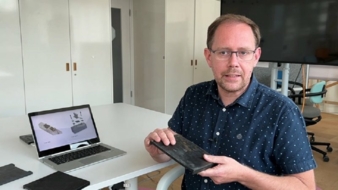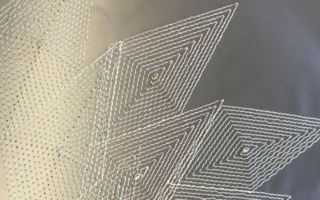15/11/2022 – High-tech — auf Deutsch lesen
“Cushions” against rail noise and vibrations
An inconspicuous component under the railway tracks is a beacon of hope for quieter rail traffic. First tests on passing trains show a positive effect.
Railroad noise is often a major nuisance for residents living near railway tracks. To reduce it, researchers at Empa and the Haute École d'Ingénierie et de Gestion du Canton de Vaud, under the leadership of EPFL, have rethought an inconspicuous component of the rail system: rail pads made of elastic polymers, which are inserted between the rails and concrete sleepers. They serve to protect the highly stressed track made of compacted ballast and concrete sleepers.
In Switzerland, these pads are usually made of hard plastic, ethylene vinyl acetate (EVA). A softer material would protect the tracks even better – but at the price of higher noise pollution. To solve this tricky problem and create a quieter alternative, the research team has developed novel rail pads in recent years on behalf of the Federal Office for the Environment and the Federal Office of Transport in collaboration with SBB, the Swiss national railroad company.
A tailor-made composite material
The experts’ original idea: hard shell, soft core – in the form of an outer shell made of conventional EVA with a core made of a soft viscoelastic material. They precisely tuned the damping of the core to the frequency range from about 500 to 2,000 hertz, in which vibrations are particularly noise-intensive.
After computer calculations and laboratory measurements of newly developed components based on this principle proved promising, the researchers produced the first prototypes together with the plastics manufacturer Semperit. And finally, last March, they tested their rail pads in practice together with SBB experts – on a 100-meter section of track near Nottwil in the canton of Lucerne. Measurements of the vibrations of track sleepers and rails, sound levels and other data were used to precisely record their effects during real train passings.
As Empa researcher Bart Van Damme explains, the results of the tests were very encouraging (see video below). The analysis of the data showed that the new rail pads noticeably dampened both train noise and vibrations. Thanks to these results, the researchers are now optimistic that the novel components will be used in practice in the future.
The railroad noise tests in Nottwil on video:




